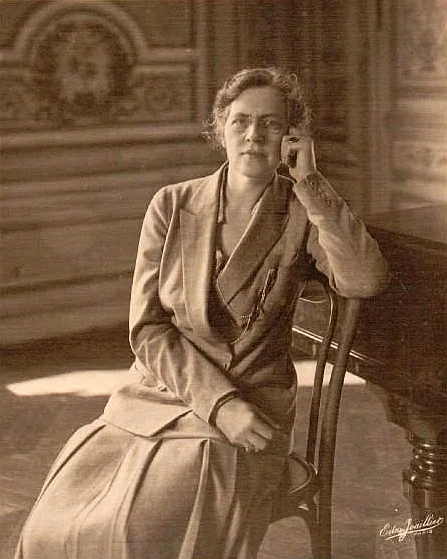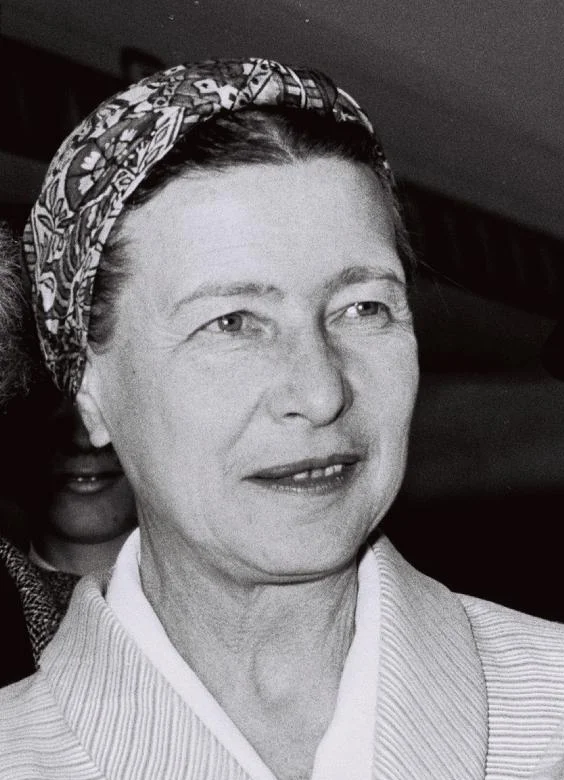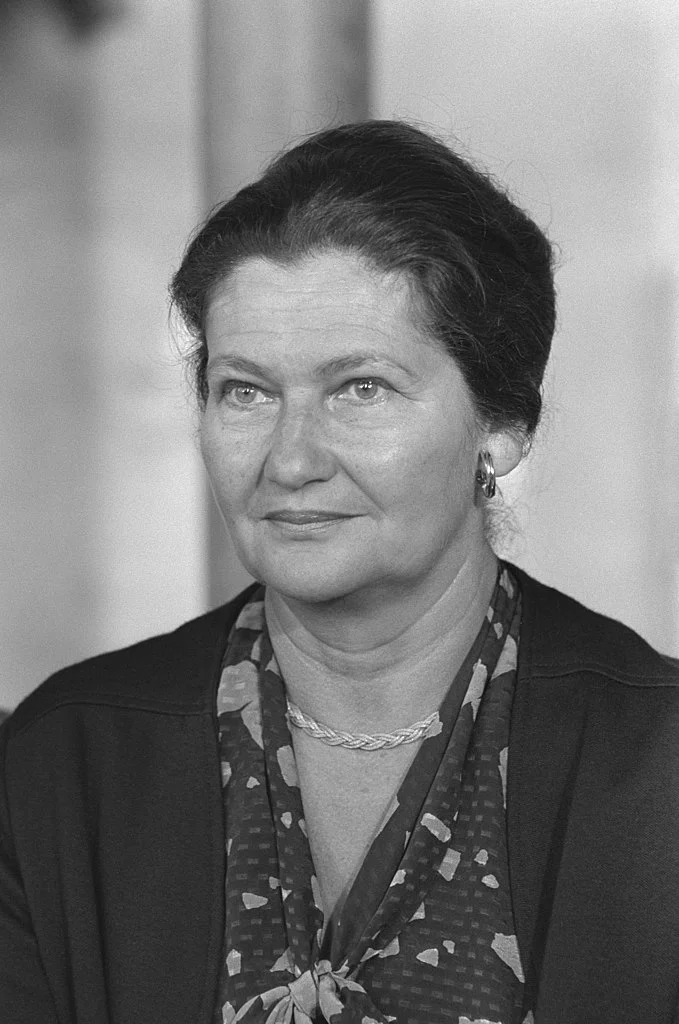Great Women of France: 19th and 20th centuries – Part 3
Who are the great women of France? There are so many, it is hard to list them all! But let’s start with 15 who have played important roles in the history of la belle France.
You’ll find a few surprises on our list, like the woman who was not French but American, and another who may never have been to France at all! But that’s part of the fun of learning about these extraordinary women.
There is so much to say that we’ve divided our list into three different articles, each discussing five women.
- Part 1 – the period up to the end of the 16th Century,
- Part 2 – the period up to the end of the 19th Century, and
- Part 3 – the 20th Century.
Who’s missing? Who shouldn’t be here? Tell us in the comments below!
Great Women of France: Part 3/3
Marie Curie: 1867 – 1934

Marie Curie
Marie Sklodowska-Curie, better known as Marie Curie, was born and raised in Poland and began her scientific studies at the clandestine Flying University. She then moved to France to pursue her studies, where she met and married Pierre Curie and became a naturalized citizen.
Marie Curie is best known for her work on radioactivity—a term she coined—and for which she and Pierre won the Nobel Prize in Physics. Marie Curie later received the Nobel Prize in Chemistry for her discovery of the elements radium and polonium (which she named after her native Poland), making her the only person to have received a Nobel Prize in two different scientific fields.
Curie’s groundbreaking work led her to become the first woman professor at the University of Paris and the founder of the Curie Institute. She also established mobile X-ray units during the First World War, saving many lives.
Despite her accomplishments, Curie was never fully accepted in France during her lifetime. She was often considered a foreigner and falsely called a Jew (antisemitism then being strong in France.) But history has recognized her greatness, and in 1995 she became the first woman to be laid to rest in the Pantheon on her own merits.
Besides the Nobel Prizes awarded to Marie and Pierre Curie, their daughter and son-in-law also received the Nobel Prize in Chemistry. The Curies were quite a family!
Les Salonnières of the 20th century
While the salons of 20th century Paris are not as well-known as those of the Enlightenment, there are two that deeply influenced Western art and culture.
Gertrude Stein: 1874 – 1946

Gertrude Stein
The first was the weekly meeting of artists and writers hosted by Gertrude Stein during the 1920s. Regular attendees included Pablo Picasso, Henri Matisse, Ernest Hemingway, and F. Scott Fitzgerald.
Stein was born into a well-off American family and raised primarily in Oakland, California. After college at Radcliffe University and medical school at Johns Hopkins (she got bored and didn’t finish), Gertrude and her brother Leo moved to Paris and began collecting art, building an “important and prescient” collection of works by Picasso, Matisse, Cézanne, and other modern masters.
Stein found herself constantly interrupted by friends wanting to see the artwork displayed in her home, which disturbed her writing. So, she organized a single evening per week where they could come to see the art, which evolved into her famous salons where art and literature were discussed. These gatherings are said to have “helped define modernism in literature and art.”
Nadia Boulanger: 1887 – 1979

Nadia Boulanger
The second notable Parisian salon was held by the musician, composer, and teacher Nadia Boulanger. Boulanger taught thousands throughout her career, including many of the century’s notable musicians and composers such as Aaron Copland, Philip Glass, Quincy Jones, and Elliott Carter. She once even refused lessons to George Gershwin! (After a long discussion, she said to Gershwin, “I can’t teach you anything.” He loved to tell that story.)
Boulanger’s father was a musician and composer, and her mother was a Russian princess, Nadia was raised in a home filled with music. She showed talent at a young age and won numerous competitions, but decided to devote herself primarily to teaching.
Boulanger gave private lessons in her home, and held a weekly group lesson which was followed by her “at homes.” These were weekly salons, where students could meet and mingle with professional musicians. Frequent guests were her friends Igor Stravinsky, Paul Valéry, and others with whom the students discussed art and music.
Besides her teaching, Boulanger was a notable conductor and was the first woman to conduct some major orchestras in the US and Europe, including the BBC Symphony Orchestra and the Boston Symphony Orchestra.
Coco Chanel: 1883 – 1971

Coco Chanel
Another of the true Great Women of France: Does anything say French fashion more than Chanel? From the little black dress to Chanel No. 5, Chanel symbolizes for many the epitome of chic. Coco Chanel was a designer, a business executive, an intimate of the rich and famous…and a Nazi spy.
Gabrielle Bonheur Chanel was born into a poor family. When her mother died when she was young, her father sent her to live in a convent. Life there was hard, and the discipline strict, but it was there that she learned to sew.
After Gabrielle turned 18, she worked as a seamstress and sang in nightclubs, where she picked up her nickname Coco. Her singing career didn’t last, and a few years later she became the mistress of the rich textile heir Arthur Capel, which put her on her life’s path.
Capel introduced Coco to high society, and when she wasn’t drinking champagne she designed hats as a hobby. With Capel’s support, Coco opened a hat shop in Paris, which was an immediate success. Within a few years, she opened shops in Deauville and Biarritz, two gathering spots of the rich and famous, and business boomed.
Coco sold not only hats but also deluxe casual clothing. Her chic but accessible styles rewrote the haute couture handbook, and as her shops flourished, she decided to open her own Maison de couture in Paris.
Business was so good that within a few years, she was employing thousands. She hobnobbed with the elite of society, and Samuel Goldwyn paid her a fabulous sum to design costumes for his Hollywood productions. She had an active love life, carrying on affairs with the likes of Igor Stravinsky, the Duke of Westminster, and (it is rumored), the Prince of Wales.
But things changed in 1939 when France was defeated by Germany. Coco closed her factories and—a virulent antisemite—began collaborating with the Nazis. She took a German diplomat as a lover and carried on undercover missions for the Nazis. When the tide turned and France was liberated, she fled to Switzerland and only returned in 1954. It is said that her friend Winston Churchill intervened to prevent her from being prosecuted.
Today, Coco Chanel is known mostly for her impeccable style and iconic designs. But her legacy is complicated.
Simone de Beauvoir: 1908 – 1986

Simone de Beauvoir was a writer, philosopher, and feminist, best known for her trailblazing work The Second Sex.
De Beauvoir was born into a prosperous family whose fortune was greatly diminished by the First World War. Left without a dowry, young Simone decided she would earn her own way in the world. A brilliant student, at the age of 21 she became the youngest person to ever pass the agrégation in philosophy, a major national exam. She finished second only to Jean-Paul Sartre, who later became her long-time lover.
De Beauvoir studied at the Sorbonne and began teaching high school, something she did until she could support herself through her writing. Her most famous book, The Second Sex, was a landmark work that has deeply influenced feminism. With its famous line, “One is not born a woman, one becomes one” de Beauvoir distinguished between the biological aspects of being a woman and those created by social norms. A prolific writer, she also received France’s most prestigious literary award, the Prix Goncourt, for her book The Mandarins.
While widely admired for her pen, de Beauvoir’s belief in open sexual relationships has clouded her reputation. She was accused of sexually abusing several of her young female students, and once campaigned for the release of convicted pedophiles. Along with Sartre and other French intellectuals, she supported the abolition of France’s age-of-consent laws for children.
De Beauvoir was an icon to other feminists like Betty Friedan, supporting and advising them, and was active in the Women’s Liberation movement of the 1970s and after.
Simone Veil: 1927 – 2017

Simone Veil
One of the true Great Women of France: Holocaust survivor, staunch advocate of women’s rights, and accomplished politician: Simone Veil left her mark on 20th century France.
Born into a Jewish family in Nice, Simone used false names and hiding places to avoid capture by the Nazis during World War II. This worked until the day in 1944 when she and the rest of her family were arrested and sent to the death camps. Most of her family was murdered, but Simone managed to survive both Auschwitz and Bergen-Belsen by lying about her age so she could become a forced laborer.
A year later, when the camps were liberated, Simone studied law at the University of Paris and met her future husband, Antoine Veil. After graduation, Simone became a magistrate and began working in the Ministry of Justice. She was there nearly 20 years, improving women’s rights in general and specifically those of incarcerated women.
She then joined the government of President Chirac as Minister of Health, and was given the most explosive dossier around—she was tasked with passing a law legalizing abortion. This she did, over fierce opposition in conservative France, and the “Veil Law” is her most enduring legacy.
Veil then ran for election to the European Parliament, where she led a political party and became the body’s first woman president. She left that post to again join the French government, this time as Minister of State and Minister of Health, before finally retiring from politics.
Veil was named a member of France’s highest constitutional court, the Constitutional Council, and became an “immortal”— a member of the French Academy. On her Academy sword, she had engraved 78651, her number at Auschwitz.
Simone Veil died just shy of her 90th birthday. Today she is in the Pantheon, the final resting place of France’s greatest heroes.
Who would you have selected as the top five great Women of France in the 20th century?
Image Credits
Marie Curie: Wikipedia, public domain
Stein: Wikipedia, public domain
Nadia Boulanger: Wikipedia, public domain
Coco Chanel: Wikipedia, Creative Commons License, attribution Los Angeles Times
Simone de Beauvoir: Wikipedia, Creative Common License, attribution Moshe Milner
Simone Veil: Wikipedia, public domain







I loved this series and was especially impressed by the stories of Sylvia Pankhurst and Louise Weiss. Their determination and passion for their causes is truly inspiring!